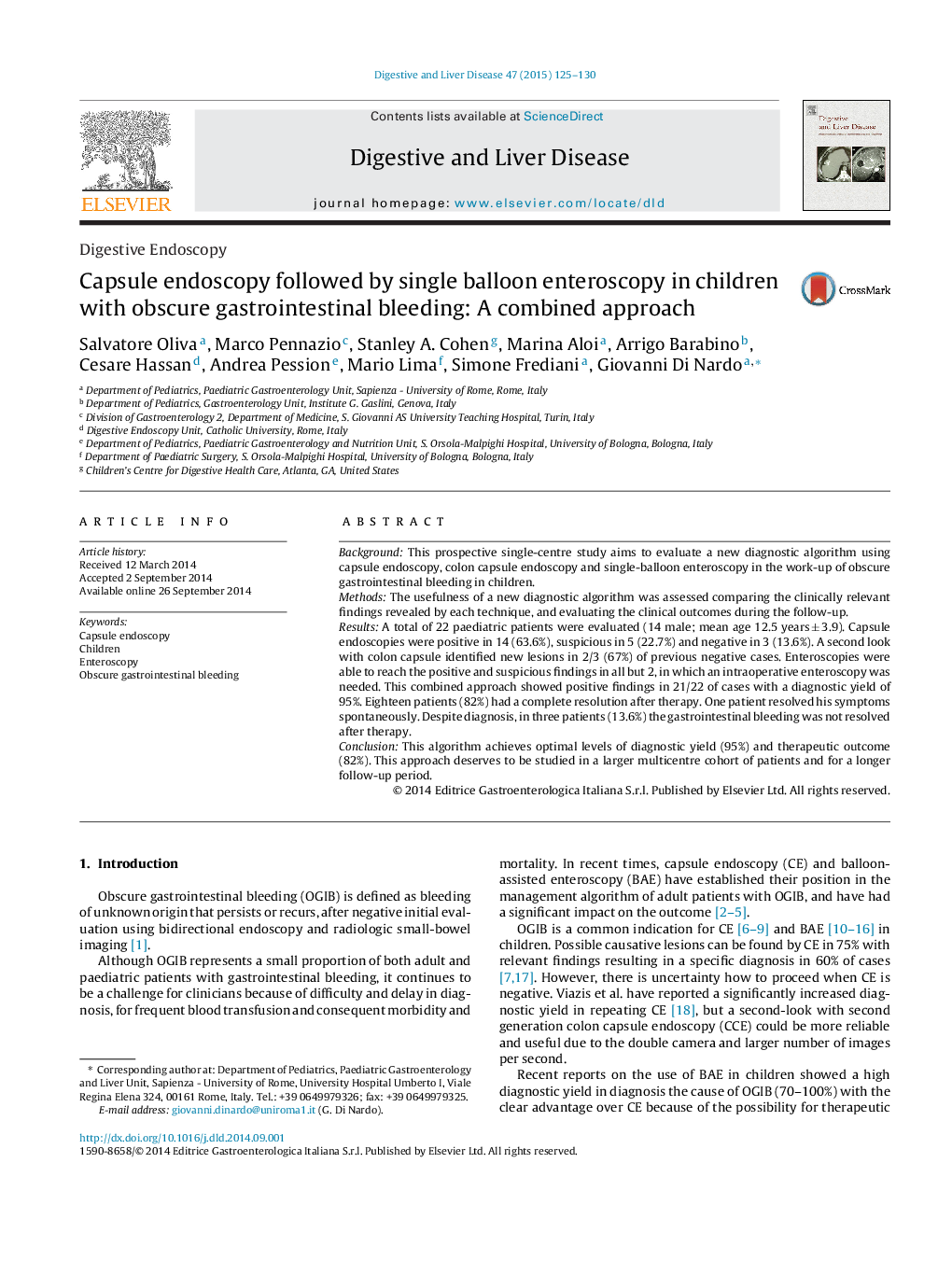| Article ID | Journal | Published Year | Pages | File Type |
|---|---|---|---|---|
| 6088645 | Digestive and Liver Disease | 2015 | 6 Pages |
BackgroundThis prospective single-centre study aims to evaluate a new diagnostic algorithm using capsule endoscopy, colon capsule endoscopy and single-balloon enteroscopy in the work-up of obscure gastrointestinal bleeding in children.MethodsThe usefulness of a new diagnostic algorithm was assessed comparing the clinically relevant findings revealed by each technique, and evaluating the clinical outcomes during the follow-up.ResultsA total of 22 paediatric patients were evaluated (14 male; mean age 12.5 years ± 3.9). Capsule endoscopies were positive in 14 (63.6%), suspicious in 5 (22.7%) and negative in 3 (13.6%). A second look with colon capsule identified new lesions in 2/3 (67%) of previous negative cases. Enteroscopies were able to reach the positive and suspicious findings in all but 2, in which an intraoperative enteroscopy was needed. This combined approach showed positive findings in 21/22 of cases with a diagnostic yield of 95%. Eighteen patients (82%) had a complete resolution after therapy. One patient resolved his symptoms spontaneously. Despite diagnosis, in three patients (13.6%) the gastrointestinal bleeding was not resolved after therapy.ConclusionThis algorithm achieves optimal levels of diagnostic yield (95%) and therapeutic outcome (82%). This approach deserves to be studied in a larger multicentre cohort of patients and for a longer follow-up period.
